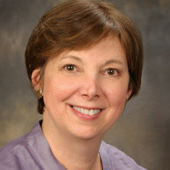THIS ARTICLE IS MORE THAN FIVE YEARS OLD
This article is more than five years old. Autism research — and science in general — is constantly evolving, so older articles may contain information or theories that have been reevaluated since their original publication date.

You may have heard of the ‘Right to Try,’ a bill that President Donald Trump signed into law on 30 May. The U.S. law expands doctors’ ability to prescribe experimental drugs for people with life-threatening conditions.
This sounds like a good thing, but experimental drugs may not be safe or effective — and can even be deadly. And the ‘life-threatening’ conditions included in the new law are so loosely defined that they can include autism.
More than 70 organizations, including the American Cancer Society and the National Consumers League, lobbied the United States Congress to defeat the bill. But they were no match for its strong support from President Trump, Vice President Mike Pence and the billionaire Koch brothers, who spent millions to ensure the law’s passage.
Those key supporters decided that people with autism or other conditions do not need to be protected from ineffective or unsafe medical products. On the contrary, in their view, experimental drugs that have not been proven to work could save the lives of thousands of desperate people, if only the U.S. government gets out of the way.
In fact, however, people with autism already have access to experimental treatments; the new law could make that access more dangerous.
Safety first:
Behavioral treatment for autism is safe, but it is not effective and affordable for everyone. There are two drugs approved to treat irritability in people with autism, but they don’t always work and can have dangerous side effects. As a result, many people with autism already use treatments that are not approved for the condition.
For instance, some doctors prescribe anti-inflammatory medications and neurofeedback devices. This is called ‘off-label’ prescribing because autism is not listed as an approved indication for these treatments. Some physicians regularly prescribe off-label treatments for autism, others conduct studies of these new uses for autism, and doctors sometimes suspect that a specific individual might benefit from an off-label use in an ‘N-of-1 study.’
However, off-label uses often do more harm than good. Most treatments have at least some risks, and the U.S. Food and Drug Administration (FDA) approves treatments based on whether the benefits outweigh those risks for a specific condition. If a treatment isn’t proven to have any benefit for people with autism, the risk could be too high to justify trying it.
To understand why the Right to Try law is so dangerous, it is important to understand that clinical trials are designed to safeguard participants while gathering evidence of medical benefit.
Researchers start with small, short-term phase I trials. These typically include a few healthy volunteers to make sure an experimental treatment seems safe in the short term. Phase II trials are somewhat larger; they are short-term studies that evaluate whether the treatment works for a particular condition and is safe. These studies are halted if participants are shown to be harmed.
The most important studies are phase III clinical trials, which tend to be the largest, longest studies and may compare different dosages or other strategies for making the treatment as safe and effective as possible. When these studies are complete, the FDA decides whether the benefits of the treatment outweigh the risks for specific dosages and specific groups of individuals.
For example, some drugs approved for schizophrenia also help calm down people with autism, but the risk of sudden death would outweigh the modest benefits for a person with autism.
Ethical quandaries:
Some people believe the new law will improve access to experimental treatments for those who are unable to participate in clinical trials. For instance, some people live too far away from the medical center where a study is underway; others might be excluded from a trial because of additional health problems or their age.
What may be less known is that these individuals already have the right to apply for access to an experimental drug under the FDA’s ‘expanded-access’ program. This program requires that the requested treatment has been tested in a phase II or phase III trial and there is some evidence that it might work and is safe. A doctor can apply to the manufacturer to obtain the treatment for an individual in their care. If the manufacturer agrees, the FDA makes sure the recipient is aware of the risks. The agency has approved 99 percent of these expanded-access applications.
The new law lowers the bar to any experimental treatment that has been tested in a phase I clinical trial. More doctors may be willing to request access to experimental drugs because it makes it easier for them to ask. However, our center estimates that only 15 percent of the drugs that complete Phase I trials are eventually proven to be safe or effective, according to data from a major study. The other 85 percent are either not safe, not effective, or both. The law also completely removes the FDA from the process. And if an individual is harmed by an experimental drug, the law shields the company from legal liability.
The best pharmaceutical companies know the importance of testing their product in clinical trials rather than letting people try it with few safeguards. But some companies will not necessarily be motivated by the desire to protect people from harm. Companies that agree to the requests are likely to be more desperate to sell their product than to test it and make sure it is safe and effective.
The bottom line: For a person with autism, it is not worth the risk to go outside the established safeguards and access a treatment that may cause great harm.
Diana Zuckerman is president of the National Center for Health Research, a nonprofit think tank based in Washington, D.C.

By joining the discussion, you agree to our privacy policy.